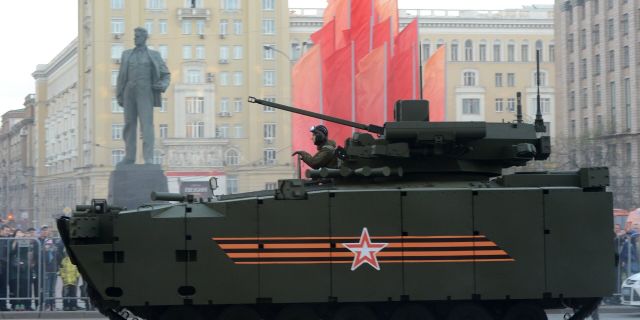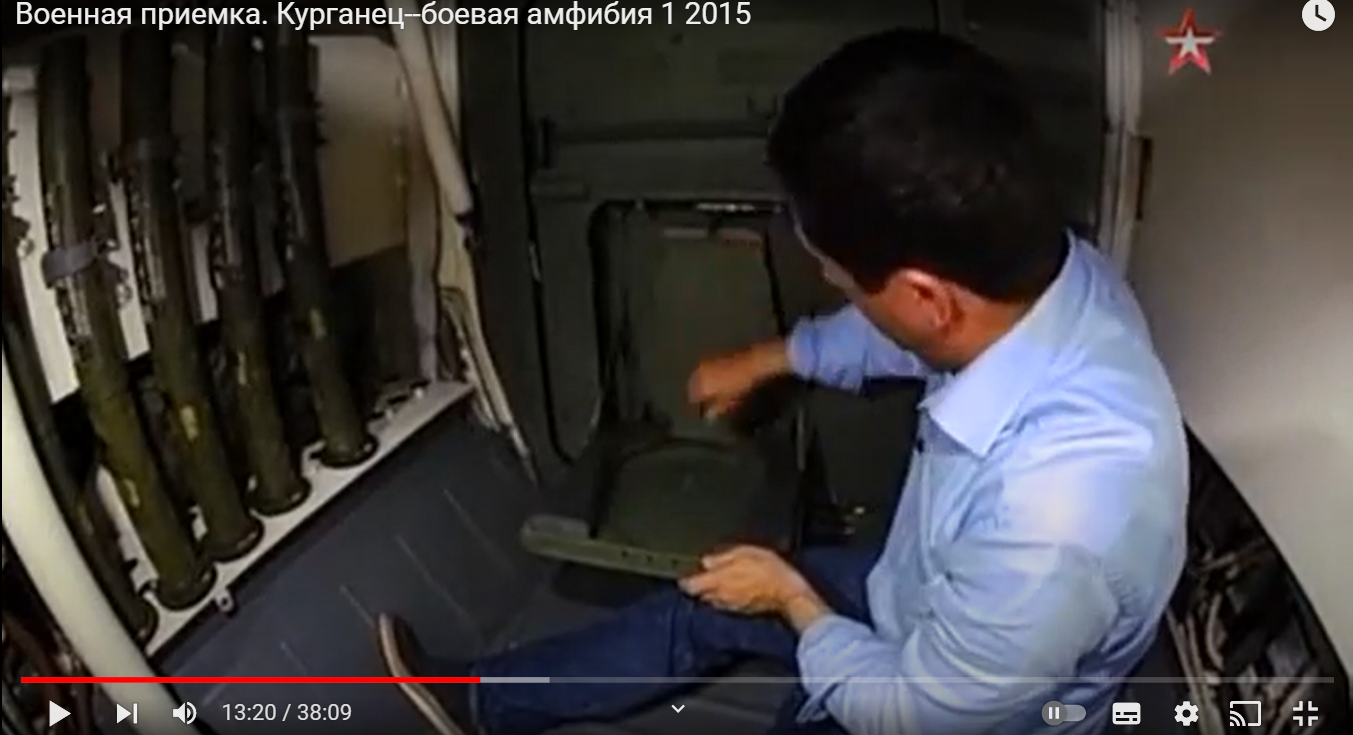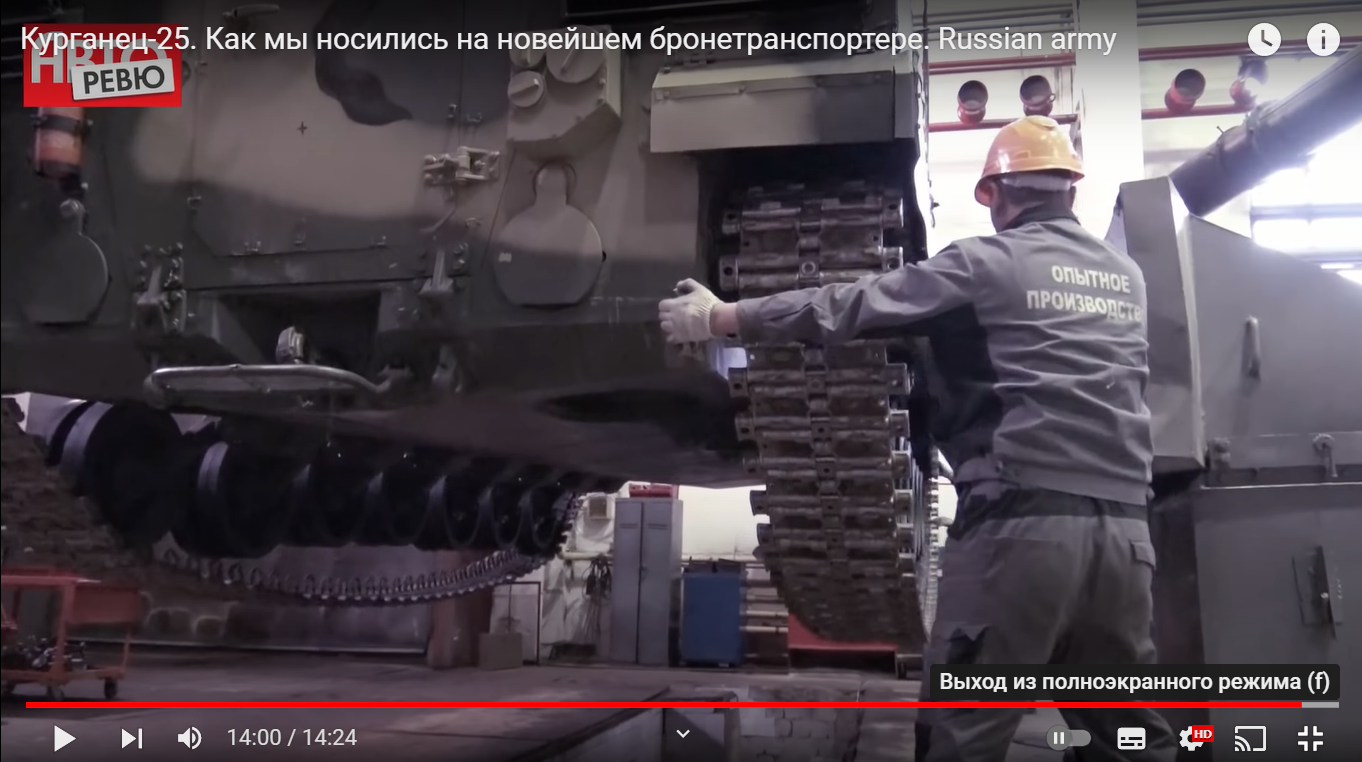The new generation of Russian armored vehicles "Kurganets-25" is distinguished by advanced protection and versatility, according to Zhongguo Junwang. Thanks to the unusual design, the BMP adapts to any conditions. According to the authors of the article, Russia has surpassed the United States in the field of military research. Kurganets-25 is a living proof.
Russia has always been a power that has placed great emphasis on the research and development of armored vehicles. The series of infantry fighting vehicles (BMP) produced by it was once at the advanced level in the world. Currently, it still has a large stock of infantry fighting vehicles, but their technical level is seriously lagging behind. Against this background, the country began to develop a new generation of armored vehicles — the Kurganets-25. What advantages does this model have compared to the previous series of armored vehicles? What will be its future development prospects? Will they be able to fully adopt it?
Heavy-duty characteristics contribute to accelerating the development of Russian armored vehicles
"Kurganets-25" is the name of a 25—ton universal medium tracked armored platform produced by the Kurgan Machine-Building Plant. After the dismissal of chief engineer Sergey Yerofeyev, Sergey Ushenin took over the development. The infantry fighting vehicle (BMP) received the code name "Object 695" (B-19), and the armored personnel carrier (APC) — "Object 693" (later the index B-10 was assigned). The technical plan was approved in the spring of 2010, and development began at the same time. The first prototype was demonstrated in September 2013. After improvements, the BMP was presented at the parade in Alabino in April 2015, and on May 9, both models of the Kurganets-25 took part in the Victory Parade on Red Square and attracted incredible interest.
In Kurganets-25, special attention is paid to the characteristics of protection, modularity and versatility, thanks to which the equipment can be transformed into many different models, including an infantry fighting vehicle, an armored personnel carrier and an armored repair and evacuation vehicle. So compared to other platforms, its characteristics are undoubtedly very good.
Being a new generation of Russian medium armored vehicles, the Kurganets-25 is larger than the infantry fighting vehicles currently in service: its length is 7.2 meters, width is four meters, height is 3.2 meters, and the combat weight is 25 tons. Kurganets-25 has a YAMZ-780 diesel engine with a power of 750 hp and an automatic transmission. It is capable of reaching a maximum speed of 80 km / h, 50 km / h over rough terrain, and 10 km/ h afloat, the reverse speed is 20 km / h, and the power reserve is 700 kilometers.
The main weapon system is the uninhabited Boomerang-BM combat module, which is equipped with a 30-mm 2A42 automatic cannon with selective ammunition (ammunition: 160 armor-piercing shells and 340 armor-piercing grenades) and a maximum effective firing range of four kilometers. The port side of the 2A42 is equipped with a 7.62 mm PKTM machine gun with 2,000 rounds of ammunition and a maximum firing range of one kilometer. On each side of the tower, dual launchers of the Kornet ATGM are installed. They launch laser—guided missiles, the maximum range is eight kilometers, the penetration depth is 1200 millimeters. It is also possible to strengthen the missiles with a thermobaric warhead to defeat the enemy's living forces hiding in engineering structures and strong buildings.
Compared to the old series, the biggest change in the Kurganets-25 is the strengthening of its armor and the increase in protective characteristics. This can be seen by its mass. The base model weighs 25 tons (while the BMP-1 is only 13.5 tons, the BMP-2 is 14.6 tons, and the BMP-3 is 18.5 tons). Moreover, the Kurganets-25 can be equipped with composite armor or dynamic protection units, depending on the threats on the battlefield. After completing with a set of additional armor, the total combat weight of the platform can reach 35 tons. Although compared to new foreign IFVs, such as the German Puma, its protective characteristics are still lagging behind, the Kurganets-25 has generally equaled the American M2 Bradley or British Warrior in terms of weight and armor protection.
In addition to significantly enhanced passive protection, the Kurganets-25 infantry fighting vehicle is also equipped with the Afganit active protection complex: six square smoke grenade launchers and a laser complex consisting of three laser/infrared detectors, an artillery tower and two active protection equipment located on the vehicle body. Judging by the size of the defensive ammunition, these two active defense guns are able to repel the attacks of rocket-propelled grenade launchers and anti-tank missiles. Currently, similar technologies are used on almost all advanced infantry fighting vehicles.
A significant disadvantage of early-generation Russian armored vehicles was weak electronic equipment. On the BMP-1, BMP-2 and even on the early BMP-3, you can see ancient equipment, for example, "infrared searchlight headlights". However, the Kurganets-25 uses a panoramic gunner's sight and a commander's observation camera. All have infrared thermal imager, laser rangefinder and all—weather combat capability. There are crosswind sensors, identification antennas, as well as a GLONASS global positioning system module mounted in the rear of the tower. This fire control system has an observation radius of up to 3,500 meters at night and can automatically track two targets at once, opening fire on them. After the completion of the attack initiated by the gunner, the artillery system can be automatically reconfigured to the target set by the commander. The level of informatization of the system has significantly increased.
Compared to the 100 mm smoothbore low-pressure cannon mounted on the BPM-3, a 30 mm automatic cannon and three 7.62mm machine guns, the attacking part of the Kurganets-25, consisting of a 30 mm automatic cannon, a 7.62mm twin machine gun and four Kornet anti-tank missile systems, seems quite "primitive." However, with the development of advanced ammunition (the muzzle velocity of the latest 3UBR-11 subcalibre armor-piercing projectile reaches 1200 m / h, it can penetrate steel sheets with a thickness of 45 millimeters from 2000 meters, and its power is comparable to European analogues) Russia will be able to increase its forces without significantly adjusting the overall design of the 2A42 cannon. With the improvement of the fire control system and the introduction of new ammunition in the future, the Kurganets-25 will have at least the same combat strength as its Western competitors.
In general, the characteristics of the Kurganets-25 are qualitatively higher than those of the BMP-3. As a promising multi-purpose medium tracked armored platform in combat operations, IFVs and APCs of the advanced model will necessarily be used together and will be able to compensate for each other's shortcomings, thereby eventually achieving the effect of "1 + 1 > 2". The Kurganets-25 series is distinguished by outstanding parameters, it has great prospects, but the Russian side still faces difficulties preventing the full deployment of this equipment.
Hidden potential for deployment in Russian troops
In the XXI century, Russia has made a big step forward in the military-industrial complex and one after another has released new technologies and developments. At the same time, she began testing equipment on various types of tanks and achieved good results on the battlefield. Modernized and re-equipped combat vehicles have become more adapted to the complicated conditions of war, and their combat capabilities have also significantly expanded. The fame of new equipment, such as the T-14 main battle tank based on the Armata heavy universal tracked platform, nicknamed the "king of the ground forces", and the new Kurganets-25 BMP, thundered around the world. In terms of research and development technologies of military equipment, Russia surpassed the United States and re-entered the list of world leaders.
Being a unique universal platform for medium tracked combat vehicles, the Kurganets-25 has remarkable tactical and technical characteristics and excellent combat capabilities. For example, the design of an uninhabited tower is creatively implemented in it: equipping with a fire control system helps to effectively solve the problem of reducing accuracy caused by the fatigue of the gunner due to prolonged manual aiming and shooting, and to ensure the possibility of a well-aimed strike. The BMP has a built-in active protection complex to repel local combat attacks and ensure their own safety on the battlefield.
As mentioned above, compared to traditional infantry fighting vehicles, the Kurganets-25 can better adapt to sudden changes on the battlefield and meet the needs of the army. The BMP has broad development prospects. If Russia can take the Kurganets-25 into service and form an active group to control it, the platform will certainly become the main threat to the enemy and a key military achievement of the Kremlin, giving the troops an asymmetric advantage.
However, now very few army Kurgans-25s are involved in combat duty, two problems arise with large-scale supply of heavy equipment.
Firstly, these are political and economic sanctions imposed by Western countries, led by the United States, which seriously hinder the development of Russian military-industrial enterprises. Due to constant comprehensive bans and restrictions, Moscow's economy is under enormous pressure, and the country's political sovereignty is under attack. The lack of funds gradually became the main factor constraining the large-scale production of military equipment. According to statistics, since the first significant reduction in investment in military enterprises in 2017, the share of the defense budget in Russia's GDP has been kept within 3% for three years in a row. Of this amount, only about 20% of the funds are invested in the military industry, this is able to support only the basic functioning of the defense industry of the state.
Secondly, the structure of scientific personnel is experiencing a huge shortage — Russia lacks talent. Currently, most military enterprises are facing problems such as aging employees and a shortage of new personnel. Most of the workers engaged in R&D and defense industry production are over 55 years old. In addition, the problem of "brain drain" is still relevant. A significant part of the defense equipment was produced in the last century, the degree of automation and informatization is not high enough, and therefore it is not easy to quickly establish mass production. Accelerating the recruitment of research personnel, updating and raising the level of industrial installations is a priority task of the Russian defense industry.
There is no doubt that the Kurganets-25 is a new model of equipment with a very attractive design and high complex power. The prospects for its application are incredibly wide. Although the full implementation of this infantry fighting vehicle requires huge investments, Russia will most likely continue to invest in the full deployment of the platform in order to guarantee the proper defense capability of the country.
It can be noted that Moscow's new combat vehicles are versatile and have military superiority. The design and level of this technique are the most advanced in the world. However, given the current economic situation in Russia, it is obvious that issues with R&D and the development of new equipment are still relevant. Western sanctions have had a significant deterrent effect on the development and use of the latest BMP.
Authors: Jiang Xiao (江逍), Liu Kaiyu (刘)), Meng Bo (孟波), Li Guowen (李国文)






